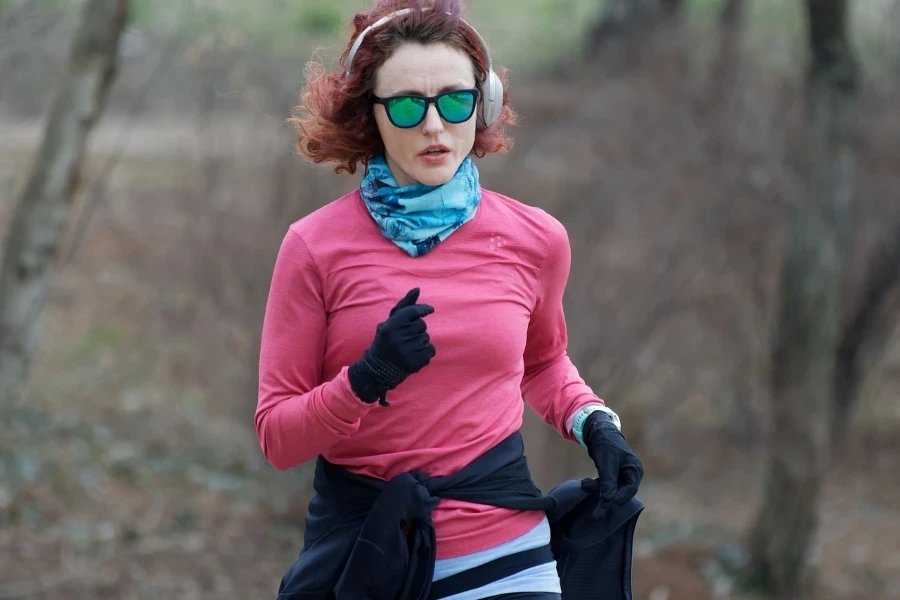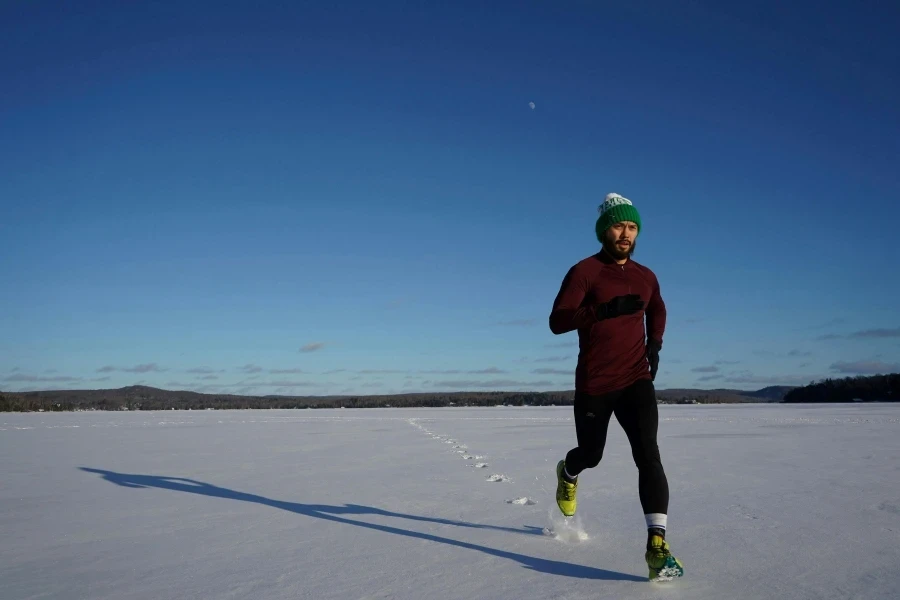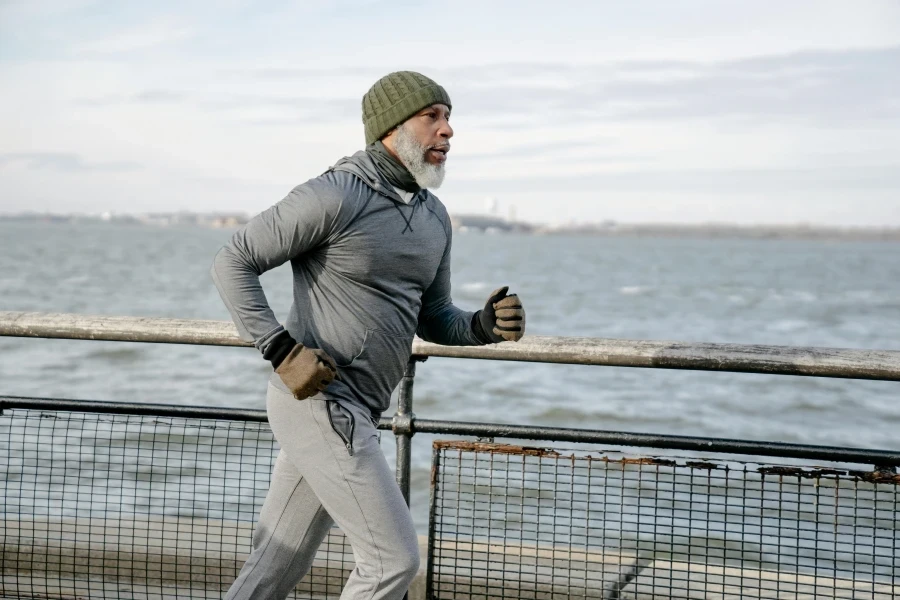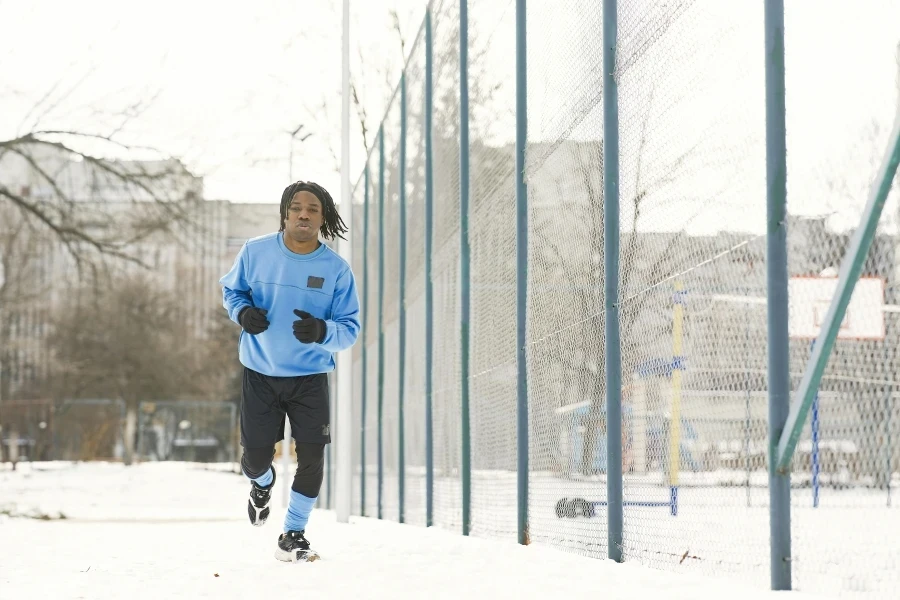As the temperatures drop, the enthusiasm for outdoor running doesn’t wane. Instead, it calls for specialized gear that ensures comfort, safety, and performance. Cold weather running gear has become essential for athletes and fitness enthusiasts who refuse to let the chill hinder their routines. This article delves into the growing demand for such gear, exploring market trends, innovative materials, and the key players driving this industry forward.
Table of Contents:
Market Overview: The Growing Demand for Cold Weather Running Gear
Innovative Materials and Textures for Enhanced Performance
Design and Functionality: Balancing Style and Practicality
Weather Resistance and Durability: Essential Features for Cold Weather Gear
Market Overview: The Growing Demand for Cold Weather Running Gear

The market for cold weather running gear is experiencing a significant surge, driven by a combination of factors including increased health awareness, the popularity of outdoor activities, and advancements in fabric technology. According to a report by Research and Markets, the global outdoor clothing market, which includes cold weather running gear, grew from USD 31.09 billion in 2023 to USD 32.79 billion in 2024. It is projected to continue growing at a compound annual growth rate (CAGR) of 5.63%, reaching USD 45.65 billion by 2030.
This growth is fueled by a heightened consumer focus on health and fitness, with more individuals embracing outdoor activities such as running, hiking, and cycling. The demand for specialized apparel that offers protection against harsh weather conditions while ensuring optimal performance is on the rise. Urbanization and the increasing disposable incomes in regions like the Asia-Pacific are also contributing to this trend. Countries such as China, Japan, and South Korea are witnessing a burgeoning middle class that demands premium-quality apparel for recreational pursuits and adventure sports.
In the Americas, the market is characterized by a growing interest in eco-friendly products and adventure tourism. The United States and Canada, in particular, have stringent regulations regarding product safety and labor practices, which outdoor clothing companies must comply with. This has led to a focus on sustainable products that meet consumer demands while adhering to regulatory standards.
Europe, the Middle East, and Africa (EMEA) also present significant growth opportunities. The European Union (EU) countries and the United Kingdom have well-established brands known for their high-quality outdoor clothing products. These brands must comply with EU regulations, including the Registration, Evaluation, Authorization, and Restriction of Chemicals (REACH), while catering to a growing interest in eco-conscious products.
The market dynamics are further influenced by technological advancements that have led to the development of advanced materials with improved functionality. Innovations such as moisture-wicking properties and better insulation capabilities are resulting in products that cater to more specific end-user requirements. The development of eco-friendly materials that enhance performance while reducing environmental impact is expected to create tremendous opportunities for market development.
Key players in the market, such as adidas AG, Columbia Sportswear Company, and VF Corporation, are continuously innovating to stay ahead of the competition. These companies are investing in research and development to create products that offer superior performance, durability, and comfort. The competitive landscape is characterized by intense competition, with numerous brands offering similar product ranges at varying price points. However, the prevalence of low-quality substitutes remains a significant challenge, impeding the adoption of high-quality outdoor clothing.
Innovative Materials and Textures for Enhanced Performance

The Rise of Thermal Fabrics
In recent years, the sports and accessory industry has seen a significant rise in the use of thermal fabrics for cold weather running gear. These fabrics are designed to provide optimal warmth while maintaining a lightweight and flexible structure. Thermal fabrics like those used in ski jackets are becoming increasingly popular due to their ability to regulate temperature effectively. These materials trap body heat while allowing moisture to escape, ensuring that runners stay warm without overheating. The integration of advanced thermal fabrics in running gear is a game-changer, offering runners the ability to perform at their best even in the coldest conditions.
Moisture-Wicking Technology: Keeping Runners Dry and Comfortable
Moisture-wicking technology is another critical innovation in cold weather running gear. This technology works by drawing sweat away from the skin to the outer layer of the fabric, where it can evaporate quickly. Quality baselayers made from synthetic materials or merino wool are essential for effective moisture management. Synthetic fabrics, such as those made by Patagonia or Helly Hansen, are known for their ability to pull moisture away from the skin efficiently. Merino wool, while more expensive, excels in both moisture-wicking and odor prevention, making it a preferred choice for many athletes. By keeping runners dry, moisture-wicking technology helps prevent the discomfort and potential health risks associated with wet clothing in cold weather.
The Role of Insulation in Cold Weather Running Gear
Insulation plays a vital role in cold weather running gear, providing the necessary warmth to keep runners comfortable during their workouts. Synthetic insulation, such as Coreloft and FullRange, offers a good balance of warmth and breathability, making it ideal for high-output activities like running. These materials retain their insulating properties even when wet, ensuring that runners stay warm in various weather conditions. Additionally, the use of hybrid insulation designs, which combine different types of insulation in strategic areas, can enhance both warmth and breathability, providing optimal performance for winter runners.
Design and Functionality: Balancing Style and Practicality

Ergonomic Designs for Maximum Comfort
Ergonomic design is crucial for ensuring maximum comfort in cold weather running gear. Jackets with ergonomic designs offer excellent mobility and comfort, allowing runners to move freely without feeling restricted. Features such as articulated sleeves, gusseted underarms, and adjustable hems contribute to a better fit and enhanced comfort. These design elements are essential for maintaining a full range of motion, which is particularly important for runners who need to maintain their stride and form in cold conditions.
Reflective Elements for Safety in Low Light Conditions
Safety is a top priority for runners, especially during the winter months when daylight hours are limited. Reflective elements in running gear are essential for enhancing visibility in low light conditions. Products like the Yaktrax Run incorporate reflective materials to improve safety. Reflective strips, logos, and accents on jackets, pants, and accessories help ensure that runners are visible to motorists and other pedestrians, reducing the risk of accidents. Incorporating reflective elements into running gear is a simple yet effective way to enhance safety during winter runs.
Versatile Layering Options for Changing Weather
Layering is a key strategy for managing varying weather conditions during winter runs. Versatile layering options allow runners to adjust their clothing based on the temperature and activity level. A typical layering system includes a moisture-wicking baselayer, an insulating midlayer, and a weather-resistant outer layer. This approach provides flexibility, enabling runners to add or remove layers as needed to maintain comfort. Versatile layering options are essential for adapting to changing weather conditions and ensuring that runners stay warm and dry throughout their workouts.
Weather Resistance and Durability: Essential Features for Cold Weather Gear

Windproof and Waterproof Materials
Windproof and waterproof materials are essential for protecting runners from harsh weather conditions. High-quality materials like Gore-Tex and other waterproof fabrics offer excellent protection against wind and rain. These materials are designed to keep moisture out while allowing sweat to escape, ensuring that runners stay dry and comfortable. Windproof and waterproof running gear is crucial for maintaining performance and preventing hypothermia in cold, wet conditions.
Durability: Ensuring Long-Lasting Performance
Durability is a critical factor in the design of cold weather running gear. High-quality fabrics, reinforced seams, and robust zippers contribute to the overall durability of running gear, allowing it to withstand the rigors of winter running. Investing in durable gear not only ensures better performance but also provides better value over time, as it reduces the need for frequent replacements.
Breathability: Maintaining Comfort Without Overheating
Breathability is a key feature of cold weather running gear, as it helps maintain comfort without causing overheating. Breathable materials such as those used in the Arc’teryx Proton Lightweight jacket allow excess heat and moisture to escape, preventing the buildup of sweat and maintaining a comfortable temperature. Breathable running gear is essential for high-output activities, as it helps regulate body temperature and prevents the discomfort associated with overheating.
Conclusion
The advancements in cold weather running gear, from innovative materials and ergonomic designs to weather-resistant features and enhanced durability, have significantly improved the performance and comfort of winter runners. As technology continues to evolve, we can expect even more innovative solutions that will further enhance the running experience in cold weather. Embracing these advancements allows runners to stay active and enjoy their workouts, regardless of the weather conditions.




